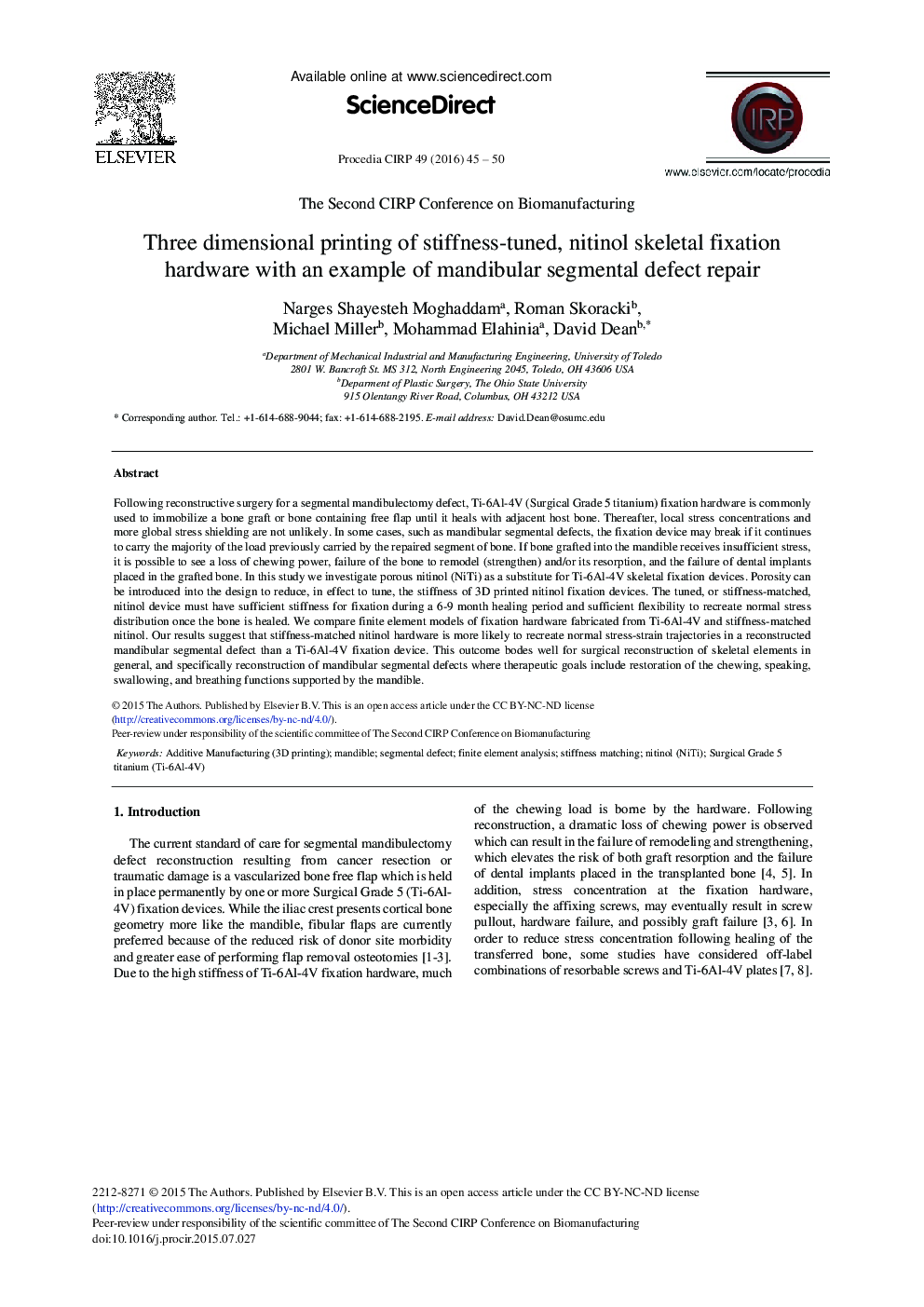| کد مقاله | کد نشریه | سال انتشار | مقاله انگلیسی | نسخه تمام متن |
|---|---|---|---|---|
| 1698226 | 1519303 | 2016 | 6 صفحه PDF | دانلود رایگان |
Following reconstructive surgery for a segmental mandibulectomy defect, Ti-6Al-4 V (Surgical Grade 5 titanium) fixation hardware is commonly used to immobilize a bone graft or bone containing free flap until it heals with adjacent host bone. Thereafter, local stress concentrations and more global stress shielding are not unlikely. In some cases, such as mandibular segmental defects, the fixation device may break if it continues to carry the majority of the load previously carried by the repaired segment of bone. If bone grafted into the mandible receives insufficient stress, it is possible to see a loss of chewing power, failure of the bone to remodel (strengthen) and/or its resorption, and the failure of dental implants placed in the grafted bone. In this study we investigate porous nitinol (NiTi) as a substitute for Ti-6Al-4 V skeletal fixation devices. Porosity can be introduced into the design to reduce, in effect to tune, the stiffness of 3D printed nitinol fixation devices. The tuned, or stiffness-matched, nitinol device must have sufficient stiffness for fixation during a 6-9 month healing period and sufficient flexibility to recreate normal stress distribution once the bone is healed. We compare finite element models of fixation hardware fabricated from Ti-6Al-4 V and stiffness-matched nitinol. Our results suggest that stiffness-matched nitinol hardware is more likely to recreate normal stress-strain trajectories in a reconstructed mandibular segmental defect than a Ti-6Al-4 V fixation device. This outcome bodes well for surgical reconstruction of skeletal elements in general, and specifically reconstruction of mandibular segmental defects where therapeutic goals include restoration of the chewing, speaking, swallowing, and breathing functions supported by the mandible.
Journal: Procedia CIRP - Volume 49, 2016, Pages 45–50
